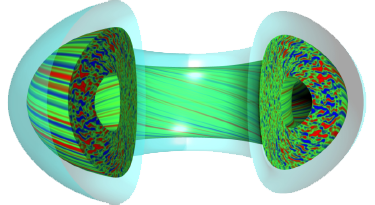Speaker
Description
Disruption prediction has made rapid progress in recent years especially deep learning-based methods. Most of the current deep learning method use the raw or slightly progressed diagnostic data as the inputs. As deep learning is an end-to-end machine learning method, it requires little feature engineering. It can extract features from data if given enough. However, the diagnostic systems in different tokamak devices is not necessarily measured the same physical information. Even in the different period of the same device, the diagnostic systems also can be changed. We can hardly control the feature extracted by the deep learning model. This leads to the model performing well on the device it is trained on but perform poorly on new device. Also, there is no easy way to transfer a deep learning disruption predictor to new tokamaks. Moreover, the interpretability on these deep learning models is not very good as most results are in lower level raw signal space and has little physics meaning. In order to develop a cross machine disruption method, we need to build a portable model and use the model to derive new understanding about the cause of disruption.
In this work, we developed a set of physical feature algorithms. They can extract features from the diagnostic data in J-TEXT and EAST based on the understanding of MHD instabilities and disruption physics. These extracted features are used as the inputs of some traditional data-driven algorithms to build a disruption prediction model. Machine learning algorithms has been set up to train the disruption predict model by using these kinds of extracted physical features as inputs in J-TEXT and EAST. The model not just out performed our deep learning model but it also has much higher portability in cross machine test. This can serve as a foundation of the future cross machine disruption prediction model. Further model interpretation on J-TEXT and EAST prediction model can be carried out to deepen understanding of disruption mechanism as the input features of the models have clear physics meanings.
| Country or International Organisation | China |
|---|---|
| Affiliation | Huazhong University of Science and Technology |

